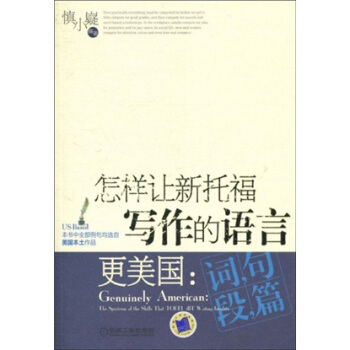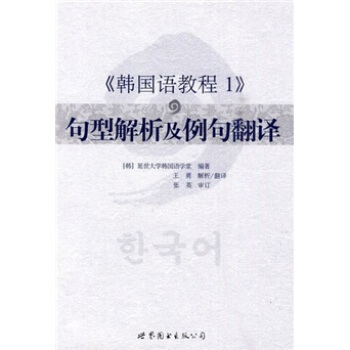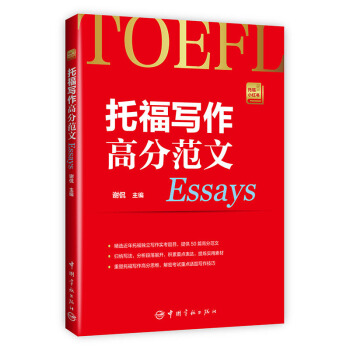![牛津英文经典:悲剧的诞生(英文版) [The Birth of Tragedy]](https://pic.windowsfront.com/11886761/56dfebd0N27c86330.jpg)

具体描述
编辑推荐
牛津大学出版百年旗舰产品,英文版本原汁原味呈现,资深编辑专为阅读进阶定制,文学评论名家妙趣横生解读。内容简介
希腊艺术历来引起美学家们的极大兴趣。在尼采之前,德国启蒙运动的代表人物均以人与自然、感情与理性的和谐来说明希腊艺术繁荣的原因。在《悲剧的诞生》中,尼采一反传统,认为希腊艺术的繁荣不是源于希腊人内心的和谐,而是源于他们内心的痛苦和冲突:因为过于看清人生的悲剧性质,所以产生日神和酒神两种艺术冲动,要用艺术来拯救人生。尼采的美学观影响了一大批作家、艺术家的人生观及其作品的思想内容。作者简介
弗里德里希·尼采(Friedrich Nietzsche, 1844—1900) 著名德国思想家,诗人哲学家。他强力批判西方传统的基督教文化,否定基督教传统的道德体系,主张重估一切价值;他提倡创造一种生存的意义,为后来的存在主义奠定了基础,被誉为存在主义的先驱之一;他热爱生命,提倡昂然的生命力和奋发的意志力,肯定人世间的价值,给欧洲古典哲学注入新鲜血液并开辟了古典语言学的崭新时代。从这个意义上说,他开创了人类思想史的新纪元,哲学史可以以尼采前和尼采后来划分。在尼采之后,传统的哲学体系解体了,哲学由非存在转变为存在,从天上回到地上,由神奇莫测、玄而又玄转变为引起亿万人心灵的无限共鸣。精彩书评
尼采知道什么是哲学,而这种知道是稀罕的。唯有伟大的思想家才拥有这种知道。——海德格尔
尼采是一个启示。我是满怀激情地读他的书,并改变了我的生活。
——福 柯
老子与尼采的相同之处,是他们两人同是反抗有神论的宗教思想,同是反抗藩篱个性的继成道德,同是以个人为本位而力求积极的发展。
——郭沫若
目录
IntroductionNote on the Translation
Select Bibliography
A Chronology of Friedrich Nietzsche
THE BIRTH OF TRAGEDY
Explanatory Notes
Index
精彩书摘
ATTEMPT AT A SELF-CRITICISM1
Whatever may lie at the bottom of this questionable book: it must have been a question of the greatest interest and appeal, as well as a deeply personal question—as witnessed by the time in which it was written, In Spite of which it was written, the exciting time of the Franco-Prussian War of 1870-1. While the thunder of the battle of W?rth died away over Europe, the exasperated friend of perplexing puzzles who “as to father this hook sat in some corner or other of the Alps, very perplexed and puzzled, at once very careworn and carefree, and wrote down his thoughts on the Greeks—the core of this wonderful and dif?cult book to which this belated foreword (or afterword) is to he added. Some weeks later: he found himself beneath the walls of Metz, still pursued by the question marks which he had added to the alleged ‘serenity’* of the Greeks and of Greek art; until ?nally in that month of the greatest tension, as peace was being negotiated in Versailles,* he made his peace with himself and, during a slow convalescence from an illness brought home from the ?eld of battle, completed the de?nitive version of the ‘Birth of Tragedy from the Spirit of Music’.—From music? Music and tragedy? The Greeks and the music of tragedy? The Greeks and the pessimistic work of art? The most accomplished, most beautiful, most envied type of men so far, the most persuasive of life’s seductions, the Greeks —what? they were the very people who needed tragedy? Even more—art? To what end—Greek art? …
One may surmise where all this places the great question mark of the value of existence Is pessimism necessarily the sign of decline, decay, of the failure of the exhausted and weakened instincts?—Is it was for the Indians,* as it is to all appearances for us ‘modern’ men and Europeans? is there such a thing as a strong pessimism? An intellectual preference for the hard, horri?c, evil, problematic aspects of existence which stems from well-being, from overflowing health, from an abundance of existence? Might it even be possible to suffer from this over-abundance? A tempting courage of the most intense gaze, which yearns for the fearful as for the enemy, the worthy enemy, 0n whom it can test it strength? from whom it wants to learn what ‘fear’* is? What is the meaning, for the Greeks of the best, strongest, bravest period in particular, of the tragic myth? Ant of the tremendous phenomenon of the Dionysian? What, tragedy born of that? —And on the other hand: that which killed tragedy, the Socratism* of morality, the dialectic, the modesty and serenity of the theoretical man—what? might this very Socratism itself not be it sign of decline, of exhaustion, of ailing health, of the anarchic dissolution of the instincts? So the ‘Greek serenity’ of the late Hellenic period would be nothing more than a sunset? The l‘Epicurean* will against pessimism only a precaution on the part of the suffering man? And science itself, our science—yes, what is the meaning of all science anyway, viewed as a symptom of life? To what end, even worse, from what source—does all science proceed? What? Is the scienti?c approach perhaps only a fear and an evasion of pessimism? A re?ned means of self-defence against—the truth? And, in moral term, something like faint-heartedness and falsehood? In amoral terms, a sly move? O Socrates, Socrates, might this have been your secret? O most secret ironist, might this have been your—irony?—
2
What I began to grapple with at that time was something fearful and dangerous, a problem with horns, not necessarily a bull exactly, but in any case a new problem: today I would call it the problem of science itself—science grasped for the ?rst time as problematic, as questionable. But the book in which my youthful courage and suspicion found expression at that time—what an impossible book had to grow out of a task so uncongenial to youth! Constructed from nothing but precocious and under-ripe personal experiences, all of which bordered on the inexpressible, and erected on the ground of art—since the problem of science cannot he recognized on its own ground—it is a hook perhaps for artists with an inclination to retrospection and analysis (that is, for an exceptional kind of artist, who is not easy to ?nd and whom one would not Care to seek out . . .), full of psychological innovations and artistic furtiveness, with a background of artistic metaphysics, a youthful work full of the exuberance and melancholy of youth, independent, de?antly Self-reliant even where it seems to defer to an authority and personal reverence, in short a ?rst work also in the had sense of the term, a work af?icted, in spite of the ancient nature of its problem, with the pen of youth, above all with its ‘excessive length’, its ‘Storm and Stress’:* on the other hand, with respect to the success it enjoyed (particularly with the great artist to whom it was addressed as in a dialogue, Richard Wagner*), a book witch has proven itself, I mean one which has in any ease measured up to the ‘best of its time'.*As a result, it should he handled with some consideration and discretion; nevertheless, I have no desire to suppress entirely how disagreeable it appears to me now, how unfamiliar it looks to me now after sixteen years to—an older eye, an eye grown a hundred times more discriminating, hut an eye grown no colder, no less familiar with the audacious task ?rst undertaken by this daring book—that of viewing science through the optic of the artist, and art through the optic of life. . .
3
To say it once again, today I ?nd it an impossible book—l ?nd it badly written, clumsy, embarrassing, furious and frenzied in its imagery, emotional, in places saccharine to an effeminate degree, uneven in pace, lacking in a will to logical hygiene,* a book of such utter conviction as to disdain proof, and even to doubt the propriety of proof as such, a book fur initiates, ‘music’ for such as are baptized in music, for those who are from the very beginning bound together in a strange shared experience of art, a password by means of which blood relations in artibus* can recognize one another—an arrogant and infatuated book which from the outset sought to exclude the profanum vulgus* of the ‘educated’ even more than the ‘people’, but which, as its in?uence proved and continues to prove, must be capable enough of seeking out its fellow infatuated enthusiasts and of luring them in a dance along new secret paths. What found expression here in any case—and this was conceded With as much curiosity as aversion —was an unfamiliar voice, the disciple of a still ‘unknown god’,* who concealed himself under the cap of the scholar the ponderousness and dialectical ill humour of the German. and even under the bad manners of the Wagnerian; what was encountered here was a spirit with unfamiliar needs, as yet unnamed, it memory of bursting with questions, experiences, hidden reaches, to which the name Dionysus* was added as another question mark; what spoke here—as one remarked suspiciously—resembled the soul of a mystic or a Maenad* almost, stammering as it were randomly and with great effort in an unfamiliar tongue, almost uncertain whether to communicate or conceal itself. It should have sung, this ‘new soul’—rather than spoken!* What a pity that I did not dare to say what I had to say then as a poet: I might have managed it! Or at least as a philologist:*—even today; almost everything has yet to be discovered and excavated by the philologist! Above all, the problem that here is a problem here—and that the Greeks, as long as we have to answer to the question ‘what is Dionysian?’ still remain completely unknown and unimaginable. . .
4
Yes, what is Dionysian? —This book provides an answer —‘a man who knows‘ speaks in it, the initiate and disciple of his gods Nowadays, perhaps, I would choose my words more carefully and speak less eloquently about such a difficult psychological question as the origin of tragedy among the Greeks. A fundamental question is the Greek’s relationship to pain, his degree of sensitivity —does this relationship remain constant?
……
前言/序言
The birth of tragedy is a book about beginnings and endings—the beginning and end of Greek tragedy and the beginning and end of the decadence of nineteenth century German culture It also marks a beginning and end in Nietzsche’s life—the beginning of his career as a freelance philosopher and the end of his career as a professional academic. As be?ts a work so concernedwith origins, it is a book which in its present form begins not once but twice, ?rst with the preface to the second edition of 1886,then with the original dedication to Richard Wagner of 1872.This double beginning signals the difference between the early and the late Nietzsche, but also foregrounds one of the major themes of the book—the ambiguity of dual origins, particularly with respect to the twin impulses of the Apollonian and the Dionysian. This ambiguity points in turn into the ambiguity of the book itself as both a historical study of the origin of Greek tragedy and a manifesto for the regeneration of contemporary German culture through music This introduction will examine these questions in the course of an exploration of the birth of tragedy in terms of its intellectual and historical contexts, Its argument, and the subsequent development of Nietzsche‘s ideas and their legacy to later generations of writers and thinkers.
Contexts
Nietzsche published The Birth of Tragedy in 1872 at the age of 28, three years after being appointed Extraordinary Professor of Classical Philology at the University of Basle in Switzerland. It was his ?rst book and might have been expected to mark the ?rst major step in an academic career. In fact, it provoked a polemic which was effectively to end his career as a professional classicist, partly because of its manifest, and at limes overriding, concern with contemporary rather than ancient culture and philosophy.
This concern was to motivate and inform all of Nietzsche's subsequent work, although he would continue Io refer to the examples of classical culture throughout his career. The close association between The Birth of Tragedy and contemporary political events is signalled at points in the book by allusions to the recent Franco-Prussian War of 1870, in which Nietzsche brie?y served as medical orderly before contracting dysentery and being invalided out of the army. In fact, Nietzsche wrote most of the book while on convalescent leave from the University of Basle in 1871. For the young Nietzsche, the recent military triumph over France and the subsequent foundation of the German Empire under Wilhelm I represented an enormous opportunity for the cultural regeneration of the newly uni?ed nation. For Nietzsche, as for many of his contemporaries, these hopes were invested in German music and in the work of the composer Richard Wagner in particular:
To sympathetic contemporary listeners, Wagner‘s operas appeared to offer both an innovative musical aesthetics and a revival of traditional mythical content, elements of progress and continuity which appealed to a nation and culture in transition. Both elements—the aesthetics of music and myth—play a crucial role in The Birth of Tragedy. Partly as a result of Wagner‘s theory and practice, the aesthetics of music occupied a central place in the European culture of the time. As a non-representational form of art, music appeared to offer an escape from the con?nes of mid-nineteenth-century realism and swiftly became the model art of the Symbolist movement, its status epitomized by Walter Pater’s celebrated declaration of 1873 that ‘all art aspires to the condition of music’ (Studies: in the History of the Renaissances).This music-based aesthetics in many ways marks the beginning of the ‘art for art’s sake‘ movement, with its insistence on the autonomy of art from outside forces and the primacy of aesthetic PVC" moral criteria, a sentiment echoed in Nietzsche's repeated insistence in The Birth of Tragedy that existence can only be justi?ed as an aesthetic phenomenon (§§ 5, 24). Furthermore, in more detailed formal terms, the tendency of contemporary music and that of Wagner in particular, to move away from harmony through chromaticism towards dissonance offered to artists working in other media the example of an art freed from traditional notions of the beautiful and opened up the possibility of an aesthetics premised on jarring contrasts of style and content.
The exemplary status ascribed to music received philosophical justi?cation in the work of Arthur Schopenhauer, together with Wagner the most important early in?uence on Nietzsche’s work. For Schopenhauer, music possessed an ontological signi?cance—unlike other more super?cial arts, it revealed truths about the nature of being itself. The key to Schopenhauer’s interpretation of music lies in his elaboration of two notions inherited from Immanuel Kant—the phenomenon (Erscheinung) and the thing in itself (Ding an rich). In the Critique of Pure Raison (1781), Kant argues that the empirical world available to our senses is merely a world of phenomena, while the true essence of things, the things in themselves, remains beyond our perception. In The World as Will and Representation (1818/1844), Schopenhauer retains this distinction, translating it into his own terms—thus Kant’s phenomenon becomes Schopenhauer’s representation (Vorstellung) While Kant’s thing in itself is identi?ed by Schopenhauer as will(Wille). So the world as we experience it is a world of representations, one step removed from the world of the will, which is the essence of being. If we now relate this to the discussion of art, it is clear that representational art can only imitate the world we perceive and so provide representations of representations, which are then so to speak two steps removed from the ultimate reality of the will. Music, however, since it is a non-representational art, completely bypasses the world of representation and offers us direct unmediated access to the will. In philosophical terms, it is thus by far the most important of the arts. This view of the philosophical signi?cance of music relative to the other arts informs the writings of both Wagner and Nietzsche and is essential to an understanding of Nietzsche‘s view of tragedy, where Schopenhauer’s notions of the phenomenon and of will are associated with the Apollonian and the Dionysian impulses respectively.
Contemporary developments in music do not provide the sole aesthetic context for the notions of the Apollonian and the Dionysian. In spite of the absence of any explicit link. It seems clear that the opposition between Apollonian ant Dionysian echoes the eighteenth-century distinction between the beautiful(das Sch?ne) and the sublime (das Erhabene), as ?rst proposed by Edmund Burke in his Philosophical Enquiry into the Origin of pure Ideas of the Sublime and the beautiful(1756) and later elaborated by Kant in the Critique of Judgement (1790). In opposition to the ?nite and symmetrical nature of the beautiful, whose experience elicits pleasure in the viewer, the sublime induces fear through its lack of limits and recognizable form This contrast between form and formlessness constitutes one of the keys t0 the relationship between the Apollonian and Dionysian as de?ned by Nietzsche, and in some respects the Dionysian might even be described as a radicalized version of the sublime,
Perhaps the most explicit context for Nietzsche‘s early work however, is that of German attitudes to the classical civilizations of Greece and Rome. Nietzsche was by training and profession a classicist. but he was just as in?uenced by the artistic as by the academic uses to which the classical past was put, In general, these uses were twofold—either the classical past could be used to justify and reinforce the present culture by suggesting an identity and continuity between past and present, or the past could be used to criticize the present by stressing the difference and distance between them. Something of the former approach can be seen in the neo-classical architecture of Karl Friedrich Schinkel which in the early nineteenth century helped to give monumental form to the growing political power of post-Napoleonic Prussia and thus to prepare Berlin for its ultimate role as imperial capital after uni?cation. The Doric revival in architecture, with its emphasis on the earliest and supposedly purest artistic forms, coincided with the theories of the Classicist Karl Otfried Müller, who argued that the Durians were ethnically different from the other Greek tribes and were in fact of northern Germanic origin, thus providing a ?attering precedent for the Prussian sure. In contrast to this appropriation of the past for the purposes of aggrandizing the present, there existed in parallel the literary tradition of German Hellenism.
用户评价
这本书的阅读体验,更像是一次精神上的高强度攀登。它不像市面上那些流行的自我提升读物,旨在提供即时的舒适感;相反,它剥去了所有安慰性的外壳,将读者置于一个充满张力的思想真空地带。尼采在书中对瓦格纳音乐剧的早期推崇(虽然他后期的态度有所转变,但初期论述仍是本书的核心支撑点之一),提供了一个极佳的入口,让习惯了音乐艺术的读者能够快速进入他的理论框架。他用音乐的非概念性,来佐证其哲学观点的有效性——音乐,尤其是悲剧音乐,是唯一能直接表达狄奥尼索斯冲动的艺术形式。这种跨学科的论证方式,极大地拓展了我的视野。我过去总认为哲学是文字的游戏,但通过这本书,我看到了语言的局限性,以及非语言艺术(如音乐和舞蹈)在触及真理时的优越性。书中的某些段落读起来,简直如同在听一段宏大而充满矛盾的交响乐,力量在积蓄,然后在一个意想不到的高潮处爆发,留下持久的回响。对于任何对西方艺术史或存在主义哲学感兴趣的人来说,这本书都是绕不开的基石,它强迫你重新思考“美”的代价。
评分当我合上这本书时,我感受到的不是知识的增加,而是一种精神上的拓宽和重塑。这本书的英文表达方式,尤其是在描述那些混沌而又具有创造性的力量时,充满了令人屏息的美感。它成功地复活了一种被后世过度“净化”和“理性化”的古希腊精神面貌。尼采对悲剧的描绘,与其说是在分析一种文学体裁,不如说是在为一种更完整、更具勇气的人性模型立传。他揭示了伟大的艺术——和伟大的生命——必然建立在对痛苦的肯定之上,而不是对痛苦的逃避。这种“肯定”的姿态,是整本书中最具感染力的部分。它没有提供廉价的希望,而是提供了一种面对绝望时可以站立的坚实地面。我开始以一种更具戏剧性的眼光看待日常的冲突与挫折,不再将它们视为必须被消除的负面事件,而是视为生命结构中不可或缺的组成部分,是催生更高层次创造力的燃料。对于那些渴望超越表象、深入探究人类精神深渊的人来说,这本书提供了一把锐利的手术刀,用以剖析我们习以为常的文化幻觉。这是一次令人振聋发聩的阅读体验。
评分这本《牛津英文经典:悲剧的诞生》(英文版),初捧卷册,便有一种扑面而来的历史厚重感,仿佛能透过那古老的纸张,嗅到十九世纪德意志思想的烟尘。我原以为这会是一本晦涩难懂的哲学论著,毕竟尼采的名头总是与高深的学院派气息挂钩,但阅读的体验却远比想象中要引人入胜。它不是那种教科书式的僵硬论述,而更像是一场酣畅淋漓的智力探险。作者以一种近乎诗意的笔触,将他对古希腊文化的深刻洞察和对艺术本质的迷恋倾泻而出。他构建的二元对立——那个光芒万丈却又略显冰冷的阿波罗精神,与那个深沉幽暗、直抵生命本源的狄奥尼索斯狂喜——迅速地抓住了读者的心神。这种对立不是简单的黑白之分,而是一种动态的、互相激荡的张力。阅读过程中,我不断地反思自己过去对艺术的理解,那些平日里习以为常的审美标准,在尼采的犀利解构下,显得如此单薄。尤其是他探讨的酒神精神如何溶解个体界限、导向原始统一体的部分,读来令人毛骨悚然,又心驰神往,仿佛真的站在了某个古老的祭祀现场,感受着那股冲破理性藩篱的原始生命力。这本书的行文风格充满了强烈的个人色彩和不羁的激情,这使得即便是最抽象的哲学概念,也充满了生命的热度,而非冰冷的逻辑推演。它像一面镜子,映照出我们这个时代对于“美”与“痛苦”的集体逃避。
评分说实话,我是在一个非常需要“提神醒脑”的时期接触到这本书的,那时我正深陷于一些对生活意义的庸常思索中,感觉被日常琐碎磨平了棱角。这本书,或者说作者所构建的那个古希腊世界,提供了一个强有力的反击。它不是教你如何获得幸福,而是教你如何去直面并拥抱存在的残酷性。我最欣赏的是作者对“艺术幻象”的解释,即艺术如何通过美感的外衣,使人得以忍受那无可避免的恐怖和荒谬。这种“幻象”并非谎言,而是一种更高级的、支撑生命继续前行的必要存在。书中对合唱队在悲剧中角色演变(从原始的酒神狂喜的直接参与者,到后来的阿波罗式叙事者)的分析,体现了一种深邃的戏剧洞察力,远超一般的文学批评。每一次重读,我都能发现新的层次感。比如,第一次读可能被狄奥尼索斯的力量所震撼,第二次读则会更关注阿波罗的秩序如何赋予这种力量以形式和可理解性。这种开放式的解读空间,是伟大的作品的标志,它不提供答案,只提供强有力的提问方式。这本书的价值,就在于它将艺术、哲学和生命体验熔为一炉,提供了一种激昂的、充满对抗性的生存哲学。
评分翻开这本经典的英文原版,那种原汁原味的学术气息扑面而来,让人有一种直接与思想家对话的错觉。与许多翻译腔过重的哲学著作不同,这里的语言精准而富有张力,对于理解尼采那种极端的修辞手法至关重要。我特别留意了他对于日耳曼精神与希腊悲剧的比较论述,这部分内容展现了作者极强的历史敏感度和文化批判力。他并非仅仅满足于描述现象,而是试图挖掘现象背后的形而上学驱动力。书中对苏格拉底主义的批判,尤其令人拍案叫绝,那种对“理性至上”的彻底颠覆和挑战,如同投向平静湖面的一块巨石,激起的涟漪至今未平。他将理性视为一种对生命痛苦的防御机制,而非救赎之道,这种论断无疑是激进且具有颠覆性的。阅读的节奏需要一定的适应,因为尼采的思绪跳跃性很强,常常在严谨的论证和近乎预言式的呐喊之间切换。这要求读者必须全神贯注,跟上他那永不停歇的思维洪流。对于习惯了线性叙事的人来说,这可能是一个挑战,但一旦你适应了这种跳跃,便会发现其中蕴含着一种超越时空的智慧,它迫使我们审视现代社会,这个将“痛苦”视为必须被消除的“错误”的社会,究竟失去了什么。
评分为了收集各个版本的茶花女,毕竟是我国翻译的第一本小说。
评分非常的好,纯权威版本,以后还会订。
评分京东商品价格优惠,质量有保证,发货速度很快,包装完整,已经开始使用了!好评!好评!好评!
评分很不错。书很干净。很经典。价格合理。物流快。
评分经典真的不一样,学英语就用这个了
评分买了几本牛津英文经典的书,准备好好看看~~
评分帮别人买的 人家挑好直接发给我拍的 默认好评
评分不知道好不好,给小孩买的
评分挺不错的,牛津出品有保证
相关图书
本站所有内容均为互联网搜索引擎提供的公开搜索信息,本站不存储任何数据与内容,任何内容与数据均与本站无关,如有需要请联系相关搜索引擎包括但不限于百度,google,bing,sogou 等
© 2025 book.coffeedeals.club All Rights Reserved. 静流书站 版权所有

![托福考试专项高分突破:口语 [Decoding the TOEFL iBT: Speaking] pdf epub mobi 电子书 下载](https://pic.windowsfront.com/12088377/5934b8fbN6617fdfb.jpg)
![托福考试专项高分突破:听力 [Decoding the TOEFL iBT: Listening] pdf epub mobi 电子书 下载](https://pic.windowsfront.com/12208520/5934c0b7N568513f7.jpg)



![双语译林·壹力文库:夜莺与玫瑰 [Nightingale and the Rose] pdf epub mobi 电子书 下载](https://pic.windowsfront.com/11181070/rBEQWFERvuYIAAAAAAmrW05KzR0AAAmbgAPRNwACatz367.jpg)

![英诗经典名家名译:惠特曼诗选 [Selected Poems of Walt Whitman] pdf epub mobi 电子书 下载](https://pic.windowsfront.com/11320980/rBEhWlI49OoIAAAAAAWGNN1PP3IAADRQQH5epQABYZM976.jpg)



![体验英语少儿阅读文库 setB 科学与自然(第6级)(适合11-13岁)(6册+MP3) [11-13岁] pdf epub mobi 电子书 下载](https://pic.windowsfront.com/10814502/5553f174N2e144279.jpg)
![不够知己(英汉对照) [Imperfect Understanding] pdf epub mobi 电子书 下载](https://pic.windowsfront.com/10971127/357e83d0-25f2-4907-8c38-55dd9021efb7.jpg)
![高中英语语法完全解决方案 [English Grammar] pdf epub mobi 电子书 下载](https://pic.windowsfront.com/11015456/55d14709Nc2978c9c.jpg)





